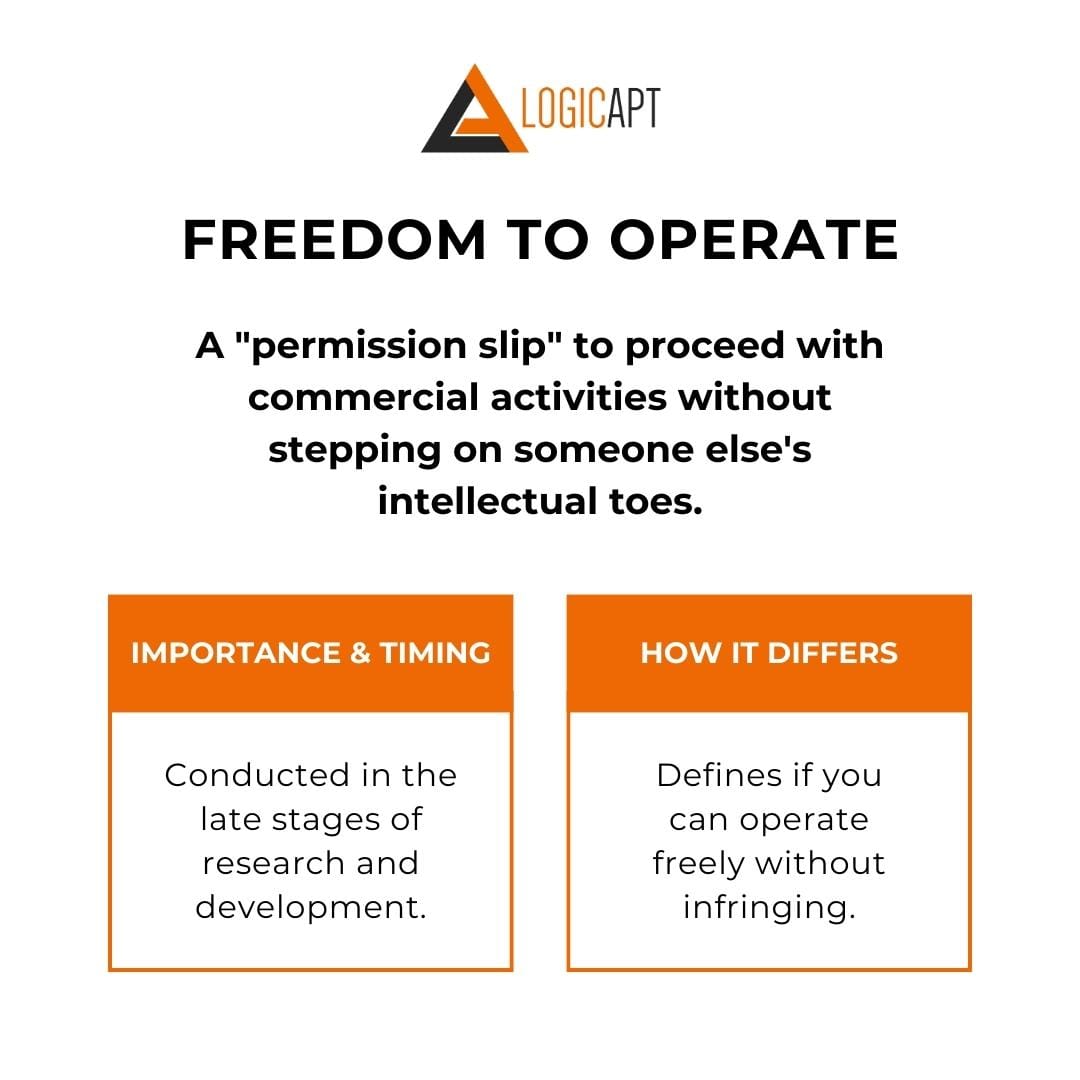Types of Invalidity Searches: A Comprehensive Overview

Introduction
Welcome to the intricate yet fascinating world of invalidity searches, where the quest for innovation meets the rigors of law. If you think patents are merely a bureaucratic hoop to jump through, prepare to have your perspective invigorated. An invalidity search, often a cornerstone in patent litigation and portfolio management, is an exhaustive inquiry to uncover any previously published work that could invalidate a patent or a patent application. It's like the Sherlock Holmes of the patent world, looking for clues affirming or questioning a patent's originality.
So why should you care about the types of invalidity searches? Because not all searches are created equal, and your particular need—litigation, licensing, or acquisition—might require a specialized approach. With stakes as high as millions of dollars and the validity of intellectual property on the line, having nuanced knowledge of different types of invalidity searches can be a game-changer.
Stick around as we dive deep into catalog searches, prior art searches, Freedom to Operate (FTO) searches, and more. Whether you're an inventor, part of a legal team, or someone intrigued by intellectual property, this blog will serve as your comprehensive guide.
Why Understanding Types Matters
When embarking on a journey through the maze of patent law, knowing your compass is essential, and in this case, that compass is your choice of an invalidity search type. You wouldn’t use a hammer to screw in a bolt, would you? Similarly, using the wrong type of invalidity search can lead to inaccurate results, wasted resources, and missed opportunities. Different scenarios call for different invalidity searches, each designed to serve a particular purpose and yield specific insights.
And let's not overlook the financial implications. Conducting the wrong type of search can be akin to throwing money down a well—initially satisfying but ultimately regrettable. The costs involved in patent procedures can be significant; hence, picking the appropriate search type is a legal necessity and a strategic financial decision.
Understanding the nuances between different types of invalidity searches is like equipping yourself with the right tools for a complicated task. Get it right and pave the way for robust intellectual property strategies.

State-of-Art Searches
If the world of invalidity searches were a toolbox, think of Catalog Searches as the ever-reliable tape measure. Often used in the initial phases of patent portfolio management, Catalog Searches are essential for getting the lay of the land. So, what exactly are they?
A Catalog Search is an overview search that scans various databases, catalogs, and resources to provide a snapshot of existing patents and patent applications in a particular field or related to a specific technology. Unlike other search types that might dig deep into the nitty-gritty of each patent, Catalog Searches aim to provide a broader view.
Applications
Catalog searches allow businesses to systematically map competitors, industry standards, white spaces, new entrants, and acquisition targets and enhance IP strategy and decision-making by answering questions like:
Which sub-segments have lower patent density, indicating opportunities?
Which small companies have strong IP potential for M&A?
What patented innovations currently meet this consumer need?
Who are the top patent assignees in this technology sector?
Advantages
The primary benefit is its broad scope, which provides a comprehensive overview of the existing intellectual property landscape. It's a time-efficient way to make preliminary assessments and inform future actions. If you're pressed for time but need a quick scan, Catalog Searches are your go-to.
Limitations
However, it's not all rainbows and unicorns. The broader nature of Catalog Searches means they are generally unsuitable for in-depth analysis or identifying subtle nuances that could invalidate a patent. They offer breadth but need more depth.
By understanding the applications, advantages, and limitations of Catalog Searches, you are better equipped to make informed decisions regarding managing your patent portfolio or advising clients.
Prior Art Searches
If Catalog Searches are the tape measure of the toolbox, then Prior Art Searches are undoubtedly the precision screwdriver—meticulous, detailed, and crucial for specific tasks. So what exactly is a Prior Art Search, and why is it so critical?
A Prior Art Search is an in-depth examination of all public disclosures, such as patents, patent applications, journal articles, and other publications, to identify any pre-existing works that could challenge the novelty or non-obviousness of a particular patent or patent application. This search serves as the litmus test for the validity of a patent, often employed in the heat of litigation or before filing a new patent application.
Purposes
The primary objective of a Prior Art Search is to fortify a patent's defenses against invalidity claims, making it indispensable in litigation scenarios. Law firms, patent search firms, and even in-house legal departments often use this search to create a stronger case for or against the validity of a patent. It's like doing homework before a big test; the more prepared you are, the better you perform.
How It Differs
Unlike Catalog Searches, which offer a panoramic view, Prior Art Searches go down the rabbit hole, focusing on intricate details that could make or break a patent's validity. Furthermore, Prior Art Searches are generally more time-consuming and costlier due to their exhaustive nature. They offer depth, in contrast to the breadth provided by Catalog Searches.
Understanding the mechanics and applications of Prior Art Searches can be pivotal in safeguarding your intellectual property, especially when it's under legal scrutiny. It's not just another tool in the toolbox; it's the tool you want to be caught with.

Freedom to Operate Searches
Picture this: you've come up with a groundbreaking invention. You're almost ready to launch, but do you have the legal freedom to operate? Enter Freedom to Operate (FTO) Searches, the Swiss Army knife in our metaphorical toolbox of Prior Art searches.
What is FTO Search?
A Freedom to Operate Search, often abbreviated as FTO, is a specialized search to determine whether a particular action, such as manufacturing or selling a new product, would infringe upon existing patents within a specific jurisdiction. Simply put, it's your "permission slip" to proceed with commercial activities without stepping on someone else's intellectual toes.
Importance & Timing
FTO Searches are essential when a company wants to introduce a new product or technology. These searches are typically conducted in the late stages of research and development and are crucial for mitigating legal risks. Imagine it as checking the weather forecast before sailing; you want to avoid any unexpected storms ruining your day or, in this case, your business.
How It Differs
While Prior Art Searches aim to dig deep into the validity of a single patent, and Catalog Searches offer a bird's-eye view of a specific sector, FTO Searches are laser-focused on the operational aspect. They aim to answer one vital question: Can you operate freely in your desired market without infringing on existing patents? Unlike other types, FTO Searches often require a legal opinion to interpret the results accurately, adding another layer of complexity to the process.
FTO Searches are not just optional; they're often the make-or-break factor determining a project's progress. A proper FTO Search can save you from legal pitfalls, and knowing when and how to employ it is crucial for any business stepping into the competitive arena of patents.
Specialized Searches
Beyond the basic triad of Catalog, Prior Art, and Freedom to Operate Searches, a range of specialized searches is designed for particular needs. Think of them as the elite commandos of the invalidity search world, ready to deploy for specific missions. Two such examples are Landscape Searches and State-of-the-Art Searches.
Landscape Searches
Ever heard the phrase, "Can't see the forest for the trees?" A Landscape Search serves as your panoramic viewfinder in the complex terrain of patents. This search aims to provide a comprehensive overview of a particular technology or industry sector. Businesses usually conduct Landscape Searches for strategic planning, assessing new market entry, or identifying potential acquisition targets.
Infringement Searches
This specialized search identifies patents and applications that a company's products or technologies may infringe. It empowers businesses to evaluate and mitigate risks, uncover licensing opportunities, and map patentability strategies. Companies typically request Infringement Searches during product development cycles or entering new markets to reduce legal and financial liabilities.
Differentiating the Specialized
While a Prior Art Search can tell you if your invention is unique, and an FTO Search informs you whether you can commercialize it, specialized searches like Landscape and State-of-the-Art give you the competitive intelligence you need. They're not about avoiding legal pitfalls as much as they are about gaining a strategic advantage.
In the ever-evolving world of intellectual property, knowing your specialized invalidity search options is akin to having an ace up your sleeve. The correct search at the right time can be a game-changer, offering invaluable insights that generic searches may overlook.
Who Conducts These Searches?
You wouldn't ask a plumber to perform open-heart surgery; the same specialization applies when conducting invalidity searches. Various professionals and entities are adept at undertaking this crucial task. Let's meet the usual suspects, shall we?
Law Firms
Think of them as the seasoned detectives of the invalidity search world. Law firms often have specialized intellectual property departments well-versed in the nuances of patent law. They can conduct exhaustive searches and offer legal opinions, making them a one-stop shop for complex business needs.
Patent Search Firms
These are the cartographers of the patent landscape. Patent search firms specialize in the nitty-gritty details of sifting through databases, journals, and other repositories to find the relevant needles in the proverbial haystacks. They often work in tandem with law firms to provide a comprehensive analysis.
In-house Legal Teams
The homegrown talent. More giant corporations focusing on innovation often have in-house legal teams proficient in conducting invalidity searches. While they may not possess the exhaustive resources of specialized firms, their intimate understanding of the company's portfolio often gives them a unique edge.
What Are The Technologies Involved In an Invalidity Search
In the information age, the key to a successful invalidity search lies in human expertise and in harnessing the power of technology. Picture this: thousands of patent documents sprawled across a virtual landscape. It's not just a needle in a haystack; it's a needle in a haystack the size of Texas. So, how do you find what you're looking for?

Databases
The starting point of any invalidity search usually involves tapping into comprehensive patent databases. Tools like the United States Patent and Trademark Office (USPTO) database, the European Patent Office (EPO) database, and even Google Patents offer a wealth of information. These databases allow advanced search queries to help pinpoint relevant patents or scientific articles. Various commercial databases like Questel Orbit, Total Patent, Derwent Innovation, Pat Seer, etc further support this.
Artificial Intelligence and Machine Learning
In walks AI, twirling its virtual mustache, saying, "I've got this." Advanced machine learning algorithms are increasingly used to sift through massive amounts of data to identify relevant prior art and catalog information. They can even predict the likelihood of a patent being granted, saving time and resources. These can be a good starting point as the searcher begins the search, but their accuracy is yet to be established.
Non-Patent Literature
Non-patent literature (NPL) refers to any documented knowledge outside granted patents and published patent applications. This encompasses many public domain materials, including academic journals, conference papers, industry publications, product manuals, press releases, and more.
Examining NPL is a critical aspect of validity searches. Specific criteria must be fulfilled for a patent to be considered 'novel' and 'non-obvious' enough to warrant monopoly protection. However, references in NPL showing prior public disclosures of concepts covered by a patent can challenge its validity. These documents educate patent examiners during prosecution and provide ammunition for invalidity assertions in litigation. Our specialists tap into vast NPL repositories across global domains when conducting invalidity searches. We uncover hard-to-find materials, including obscure foreign-language publications, that can make or break a validity claim. Expert navigation of NPL can define success in IP disputes.
Case Studies and Examples
Understanding invalidity searches is one thing, but seeing them in action is like the difference between reading a recipe and tasting the dish. Below are some case studies and hypothetical scenarios that bring the theory into sharp, practical focus.
Catalog Searches
Real-World Example: An automotive parts manufacturer wanted to expand their product lines. By performing a catalog search indexing competitors' offerings, they identified subsectors with fewer patented products to target. This allowed them to enter niche spaces with lower infringement risk due to greater white space while inspiring innovative designs beyond existing offerings. The insights minimized R&D and legal costs during diversification.
Prior Art Searches
Hypothetical Scenario: Imagine you're an inventor developing a new type of battery technology. You believe your invention is groundbreaking until a prior art search reveals a similar technology developed in Japan ten years ago. The discovery helps you pivot your research and development activities, saving time and money.
Freedom to Operate Searches
Real-world Example: Tech Giant Z was planning on launching a new smartphone with an innovative fingerprint scanner. Before going to market, the company conducted an FTO search and discovered that a lesser-known firm had a patent on a similar technology. A licensing agreement was then made, saving Tech Giant Z from a potentially costly infringement lawsuit.
Specialized Searches
Hypothetical Scenario: Let's say you're a clean energy startup aiming to revolutionize wind turbine technology. A landscape search could help you understand the existing patents in that area, giving you insights into gaps in the market or opportunities for innovation.
Conclusion
As we've journeyed through the labyrinthine world of invalidity searches, one thing stands clear: understanding the different types is not just an intellectual exercise but a crucial step for anyone involved in patents, be it businesses, inventors, or legal professionals. We've peeled back the layers of Catalog Searches, delved into the mysteries of Prior Art Searches, explored the intriguing corners of Freedom to Operate Searches, and even touched upon the specialized kinds that serve specific objectives.
Recognizing which type of search to conduct in a given scenario can be the linchpin in your intellectual property strategy. It can mean diving into a research project, eyes wide open, or stumbling into a legal quagmire. In the chess game of patents, these searches are your opening moves, setting the stage for what comes next.
In a nutshell, mastering the intricacies of invalidity searches is akin to having a Swiss Army knife in the wilderness of intellectual property. It equips you with the tools to navigate complex landscapes, dodge legal pitfalls, and, ultimately, make informed decisions.
So the next time you're faced with a patent dilemma, you'll know exactly which type of invalidity search to wield.

LogicApt is your experienced co-pilot on this journey. With our cutting-edge technology and a team of seasoned patent experts, we offer comprehensive services for all types of invalidity searches. Don't leave your intellectual property to chance; let LogicApt guide you through the maze with confidence and precision. Connect with us today to find out how we can make your patent endeavors manageable and genuinely successful.
References & Additional Resources
For those hungry for even more knowledge on invalidity searches, we recommend diving into the following:
- "Patent Searching: Tools & Techniques" by David Hunt, Long Nguyen, and Matthew Rodgers: A comprehensive book that delves into various types of patent searches, including invalidity.
- The USPTO Patent Database: An invaluable resource for those conducting U.S.-based searches.
- WIPO's PATENTSCOPE: A go-to for international patent information.
- Academic Papers via Google Scholar: Use keywords like "Invalidity Search," "Patent Law," and "Intellectual Property" to find scholarly articles on the subject.
Note: These resources are for informational purposes only and do not reflect the views or recommendations of LogicApt.



